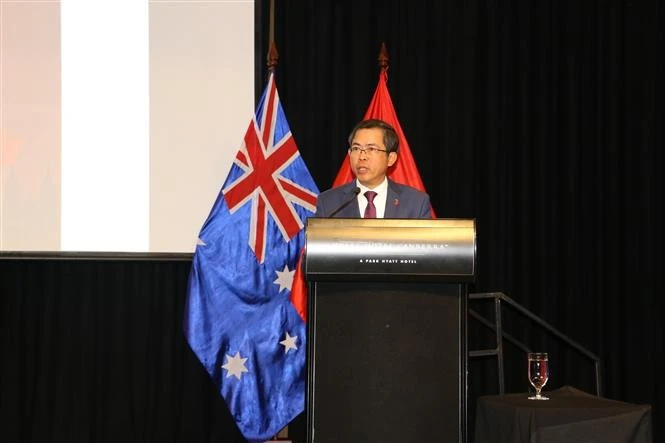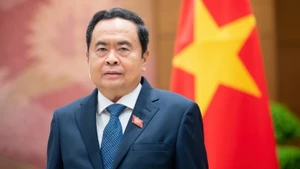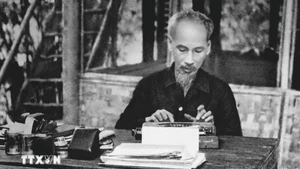Regarding the current situation of the labour market in Vietnam, Quan said that in 2018, the total human resource of Vietnam was about 66.7 million people (accounting for 91.9% of the population aged 15 and over), of which the labour force was 55.3 million people (accounting for 82.9% of total human resources). Essentially, Vietnamese workers can now fill most of the positions in production, services and business operation. A range of professions that previously required foreign experts are now covered by domestic ones, such as information technology (IT), artificial intelligence (AI), oil and gas, and telecommunications. Skilled labour has gradually been accepted by the international labour markets.
The State management agencies are still persistent in innovating to orient and support more effectively the development of the labour market in particular and the socio-economic development in general. Regarding training, the Party and the Government are determined to innovate and increase investment in high-quality vocational training institutions.
To boost the quality development of the human resources for the country's rapid and sustainable development, the deputy labour minister suggested that the quality of human resources should not focus only on professional skills, but also discipline, the ability to learn new things and improved working culture.
In addition, human resources should not be limited to the domestic labour force, but also expand to foreigners working in Vietnam and Vietnamese working abroad to contribute to the economic growth of the country. “From which, need a global mindset, a continuous development mindset and an "international standard" mindset in the planning and forecast for human resource development and vocational training,” suggested the official.
The "international standard" thinking is most evident in training. When the goal is set to train qualified human resources for economic development, it means that they can work in Vietnam, Thailand, the Republic of Korea, Japan, Germany, Canada, Australia or the Middle East, for both Vietnamese businesses and foreign ones. Therefore, the curriculum, training methods and training facilities need to be standardised and recognised in the international market.
In training, the role of planning and forecasting is acted by the State management agencies, especially the Ministry of Labour, Invalids and Social Affairs (MOLISA), as well as independent consultancy organisations, enterprises and training institutions. In particular, the MOLISA should provide guidance and support planning and forecasts based on big data and AI.
In addition to planning, forecasting and training, it is impossible not to mention the responsibility and commitment of the training institutions, which can create confidence for learners. For example, the Hanoi Mechanical and Electrical College is committed to reimbursing training fees for students if they don't have jobs and the expected salary after graduating.
The biggest challenge in planning, forecasting and training is the rapid and unpredictable change of technological progress and its impact on the labour market. For example, many industries will be lost or new jobs will appear in the new tech era. For example, office jobs and careers involving manual and semi-manual labour will witness less demand. Meanwhile, industries related to creativity (designing or analysis) or logistics will appear.
To address this issue, Quan suggested to rely on the Vietnam’s economic growth model. Vietnam is in the process of transforming its growth model towards a knowledge economy, in which the labour force will shift from agriculture to industry and services, from manual labour, using mechanical machinery, to automation. Therefore, reasonable planning, forecasting and training will meet the market demand. On the contrary, it will be a waste of social resources, in both human and financial terms.
“Regarding linking economic development with human resource planning, forecasting and training, we can refer to the experiences of other countries in the world. For example, the lesson of Estonia - a small country in the process of becoming an IT power of Europe and the first "digital" country in the world. Or recently, the Vietnamese Government has issued a “Make in Vietnam” message, with the expectation of turning Vietnam into a strong tech nation. I think it is suitable with the potential of Vietnamese people and the investment ability of domestic companies,” Quan said.
In the immediate future, in order to solve difficulties in linking planning, forecasting and training, Quan urged to strengthen the linkage participation of enterprises in vocational education activities. The reason is, only businesses can best orient the technology and both short-term and long-term requirements for their workforce to ensure that such businesses operate effectively.
Specific activities need to be implemented, including building sectoral skill councils with the participation of businesses in order to build macro policies on labour and boost employment forecasts, as well as identifying industry standards. Vocational education institutions should conduct business surveys in a scientific and regular manner. Enterprises must participate strongly in the development of training programmes and internships to make training closely linked with job creation.
Moreover, it is important to identify key industries for Industry 4.0, such as AI, data analysis and design to prepare a certain percentage of high quality human resources for mastering modern technologies. Another need is to seriously study employment and human resource planning and projection based on the economic situation in each period.
In the current context as the world market is pivoting, Asia is starting to play a central role, in which Vietnam has the opportunity to develop rapidly and sustainably in the fields of technology, services and tourism. “We should not miss this opportunity,” Quan said, stressing the key role of the development of high human resources. “Indeed, we currently lack high quality human resources, those are in the middle- and above-level managerial positions in FDI enterprises, which are currently held by Malaysian, Singapore or Thai managers,” said the deputy minister.
In order to enhance vocational skills for young people, Quan informed that his ministry is actively directing the renovation and quality improvement of vocational education in an open and flexible manner, thus creating training opportunities for all people, serving lifelong learning and increasing linkages among businesses, labour market, employment and social security.
Currently, the MOLISA is implementing three breakthrough solutions, including strengthening the autonomy of vocational training institutions, standardising quality assurance conditions and enhancing business cooperation at all levels. The ministry has also approved a plan to implement the Government’s Resolution No. 02 on improving national competitiveness in Industry 4.0, focusing on improving the quality of vocational education, strengthening quality assurance and reducing administrative procedures, Quan added.
















